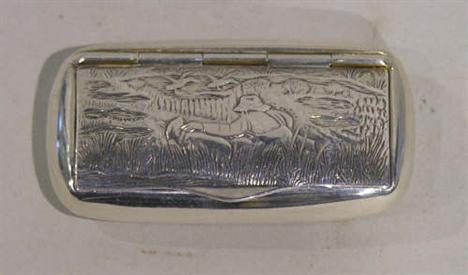We found 74924 price guide item(s) matching your search
There are 74924 lots that match your search criteria. Subscribe now to get instant access to the full price guide service.
Click here to subscribe- List
- Grid
-
74924 item(s)/page
Mahogany and oak eight day longcase clock, the 14" arched painted dial signed W. Alexander, Hexman on the raised dial, with subsidiary seconds, calendar dials and a hunting scene painted to the arch, the case with short panelled door flanked by turned columns and surmounted by a swan neck pediment, 86" high
European School (19th century). The flora of Green Bank, Hong Kong 1848: . Clerodendron. Cybidium Aloifolium. Dwarf Campanula from Shanghai. Double Spirea from Foochowfoo. Sweet scented Orchid (air plant). Rupellia Juncea. Cypripedium indigenous to Hong Kong. Camelia Albertin from Foochow. Bletia from Shanghai. Orchid from Manilla. Hibiscus seedling from Macao. Justicia Coccinea from Madras. Chirita Sinensis indigenous to Hong Kong. Michellia Champaea from Macao. Orchidius indigenous to Hong Kong. Callicarpa shrub. Sixteen, watercolour . All signed and inscribed lower left. Each 32.5cm x 23cm (16). Literature: Robert Fortune, Visit to the Tea Districts of China and India, 1852. Hong Kong Flora, 1861 supplement.. E Bretschneider, Discoveries in China, 1898. E H M Cox, Plant Hunting in China, 1945. In his book of 1852, Visit to the Tea Districts of China and India, Robert Fortune, the famous plant hunter, writes: . In order to give some idea of a Hong Kong garden, I shall attempt to describe Messrs Dent's, which was then in the possession and under the fostering care of Mr Braine. This garden is situated on the sloping sides of a valley near the bottom of one of the numerous ravines which are seen on the sides of the Hong Kong hills. It is near the centre of the new town of Victoria and is one of its greatest ornaments. On one side nothing is seen but rugged mountains and barren hills, but here the eye rests upon a rich and luxuriant vegetation, the beauty of which is greatly enhanced by the contrast.. Every one interested in Chinese plants has heard of the garden of the late Mr Beale at Macao, a friend of Mr Reeves and like him an ardent botanical collector. Nearly the whole of the English residents left Macao and went to Hong Kong when that island was ceded to England and all the plants in Mr Beale's garden which could be moved with safety were brought over in 1845 and planted in the garden at 'Green Bank'.. On entering the garden at its lower side there is a wide chunamed walk leading in a winding manner up the side of the hill, in the direction of the house. On each side of this walk are arranged the trees and shrubs indigenous to the country, as well as many of the fruits, all of which grow most luxuriantly. Ficus nitida, the Chinese banyan, grows on the right-hand side and promises soon to form a beautiful tree. This is one of the most valuable trees for ornamental purposes met with in the south of China. It grows rapidly with but little care, its foliage is of a glossy green colour and it soon affords an agreeable shade from the fierce rays of the sun, which renders it peculiarly valuable in a place like Hong Kong. . The India-rubber tree Ficus elastica also succeeds well in the . same part of the garden, but it grows much slower than the species just noticed. . On the other side of the main walk I observed several specimens of the Indian 'neem' tree (Melia Azedarach), which grows with great vigour, but is rather liable to have its branches broken by high winds, owing to the brittle nature of the wood. This defect renders it of less value than it otherwise would be, particularly in a place so liable to high winds and typhoons. This same Melia seems to be found all round the world in tropical and temperate latitudes; I believe it exists in South America and I have seen it in Gibraltar, Malta, Egypt, Aden, Ceylon, the Straits and in the south and north of China, at least as far north as the 31st degree of north latitude. Amongst other plants worthy of notice in this part of the garden are the Chinese cinnamon, the pretty Aglaia Odorata and Murraya exotica, both of which are very sweet scented and much cultivated by the Chinese. Two specimens of the cocoa-nut palm imported from the Straits are promising well. Other fruits -such as the loquat (Eriobotrya japonica), the Chinese gooseberry(Averrhoa Carambola), the wangpee (Cookia punctata) and the longan and the leechee - are all succeeding as well . as could be expected, considering the short time they have . been planted. . The Pinus sinensis, which is met with on the sides of every barren hill, both in the south and north of China, and which is generally badly used by the natives, who lop off its under branches for fuel, is here growing as it ought to do.The Chinese have been prevented, not without some difficulty, from cutting off the under branches, and the tree now shows itself in its natural beauty. It does not seem to grow large, but in a young state, with its fine green foliage reaching to the ground, it is not unhandsome.. As the main walk approaches the terrace on which the house stands it turns to the right, between two rows of beautiful yellow bamboos. This species of bamboo is a very striking one, and well worthy of some attention in England; the stems are straight, of a fine yellow colour and beautifully striped with green, as if done by hand of a first-rate artist. I sent a plant of it to the Horticultural Society in 1844.. At the bottom of the terrace on which the house stands there is a long narrow bamboo avenue, which is called the 'Orchid Walk'. This always affords a cool retreat, even at mid-day, as the rays of the sun can only partially reach it and then they are cooled by the dense foliage. Here are cultivated many of the Chinese orchids and other plants which require shade. Amongst them I observed Pharius grandifolius, Cymbidium sinense and aloifolium, Aerides odoratum, Vanda multiflora and teretifolia, Renanthera coccinea, Fernandezia ensifolia, Arundina sinensis, Habenaria Susannae, a species of Cypripedium, and Spathoglottis Fortuni.. There are also some other plants, such as Chirita sinensis, the 'man-neen-chung' (a dwarf species of Lycopodium, highly prized by the Chinese) and various other things which, taken all together, render this shaded 'Orchid Walk' a spot of much interest. Above the 'Orchid Walk' is a green sloping bank, on which are growing some fine specimens of bamboos,Poinciana pulcherrima,myrtles, Gardenias, oleanders (which thrive admirably in China), Croton variegatum and pictum, Magnolia fuscata, Olea fragans, Dracaena ferrea and Buddlea Lindleyana. The latter was brought down from Chusan by me in 1844 and is now common in several gardens on the island, where it thrives well, and is almost always in bloom, although the flower spikes are not so fine as they are in a colder climate. A large collection of plants in pots are arranged on each side of the broad terrace in front of the mansion. These consist of camellias, azaleas, roses and such plants as are seen in the Fa-tee gardens at canton; many of the pots are prettily painted in the Chinese style and placed upon porcelain stands.. Visit www.dnfa.com for condition reports.
A collection of Britains hunting figures, comprising five mounted huntsmen, a mounted hunt follower, two mounted huntswomen, four standing figures, two foxes, and seventeen hounds, generally good condition; together with a quantity of other items, including four unmarked Beatrix Potter characters, all unboxed. Visit www.dnfa.com for condition reports.
An illuminated Presentation to Ray Thompson in appreciation for his involvement with the Ross Harriers, signed N.LITTLETON, accompanied by presentation Swaine Riding Crop with silver band and engraved initials J.R.T, silver Presentation Hunting Horn by the Goldsmith and Silversmith Company, London, 1946 and a framed Photograph and text showing and describing the day the items were presented
-
74924 item(s)/page































